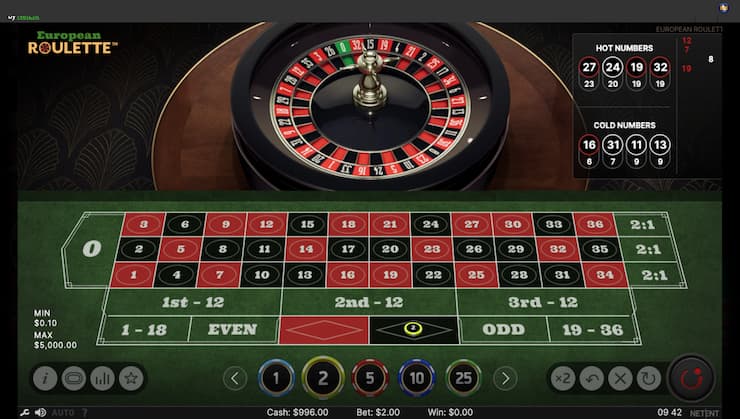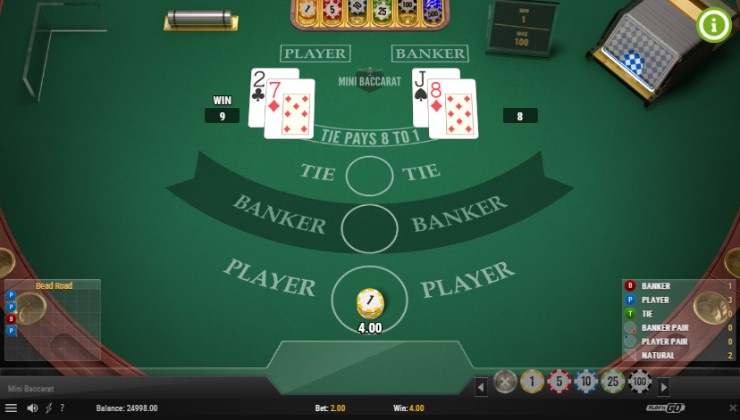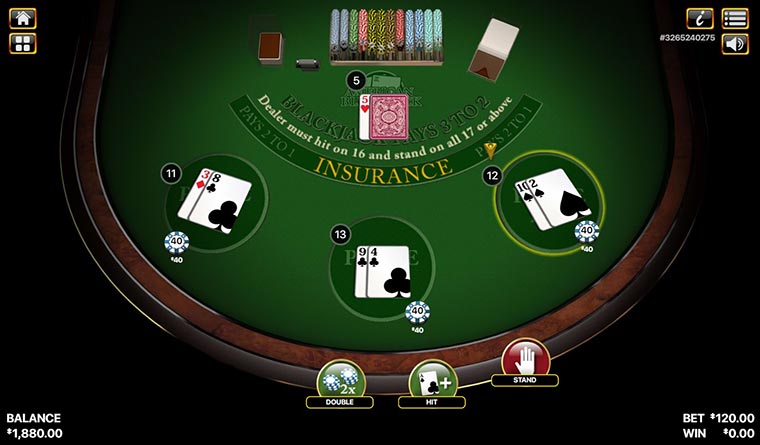The D’Alembert system involves increasing your stakes by one unit after losing a bet, and decreasing them by one unit after you win. It is therefore a classic example of a negative progression betting system.
Does the D’Alembert actually work? That’s exactly what we’re going to investigate here. En route we’ll explain the system in full detail, tell you its pros and cons and let you know what games it can be used on.
The D’Alembert System Explained
The D’Alembert System is a textbook negative progression betting strategy. That means that the main objective here is to get back any losses you suffer, rather than target higher winnings.
Like many betting systems, the D’Alembert can only be used on 50/50 propositions. Red/black in roulette games is the classic example, but there are other options too, as we’ll soon see. Do be aware, however, that – since a house edge is always built-in to these games – there’s still an element of luck. As such, there’s no guarantee you’ll break even with the D’Alembert betting system.
The D’Alembert might have a long track record, and be popular, but it’s still not a sure thing. In addition to that pesky house edge, you’re also still vulnerable to lengthy losing streaks here, which is the main drawback with all negative progressive betting systems.
How the D’Alembert System Works
As with all such strategies, you kick off the D’Alembert gambling system by identifying your unit size. At the very most, this should be 10% of your total bankroll, but we’d recommend starting off smaller – preferably at the lowest permissible table limits – while you’re getting the hang of things.
Next, you place a bet. This must be on a 50/50 game or betting market. If you use any other odds, the system won’t work. The result of that bet determines what happens next. If the bet wins, you can simply place another one using that same stake. If it loses though, that’s when the system kicks in.
For your very next bet, you’ll increase your stake size by one unit. If you bet $1 first, for example, you’ll bet $2 now. If that bet loses, you increase your stake by another unit. You keep going like that until you eventually win. When you do – since you’re playing an even-odds game – you’ll immediately recover all your money. You can then decide whether to simply walk away, or to start over again with another bet.
There are no perfect betting systems, and the D’Alembert betting strategy has both its strengths and weaknesses. Here are the main examples in each case.
Pros:
- Will theoretically recover your losses in the end
- Fairly flexible, since it can be used on all 50/50 betting propositions
- Very easy to understand and execute
Cons:
- You could rack up some big losses before being able to recover your money
- Won’t work with bets that aren’t 50/50
Bets, Profits and Losses with D’Alembert Betting System
One of the main appeals of the D’Alembert betting system is its simplicity. You’re literally just increasing your stakes by one unit after losses, and stopping when you get back to your starting point.
That said, the best way to learn any system is through examples. Here’s a case study of how D’Alembert betting progression can play out in practice.
| Bet | Result | Profit/Loss |
| $1 | Win | +$1 (the system never kicks in) |
| $1 | Lose | -$1 |
| $2 (+1 unit) | Win | $0 (the system finishes) |
| $1 | Lose | -$1 |
| $2 | Lose | -$2 |
| $3 | Lose | -$3 |
| $4 | Lose | -$4 |
| $5 | Lose | -$5 |
| $6 | Win | $0 (all losses recovered) |
Casino Games to Try the D’Alembert System On
It’s imperative that you only use the D’Alembert strategy on 50/50 bets. If you don’t, you’re completely opening yourself up to chance, and might as well not use a betting system in the first place!
Here are three of the most popular games for the D’Alembert system.
Roulette

In truth, this could basically be called the D’Alembert roulette system. Jean-Baptiste le Rond d’Alembert himself – a French mathematician in the 18th century – actually invented this strategy specifically for roulette, and it’s the most popular game for the system to this day. You will need to stick to betting on red/black on the roulette wheel for the whole thing to work, but – if you’re happy to do so – you’ll find roulette to be an extremely quick and easy way to use the D’Alembert.
Baccarat
Like roulette, baccarat is a table game of pure chance. Also, if you ignore the tie bet (which basically all experienced online casino players do), it’s a simple 50/50 proposition. You either bet on the dealer’s hand, or your own. Naturally that makes it perfect for this strategy, and – like roulette – the D‘Alembert baccarat system is extremely quick and easy to execute, potentially providing players with regular small wins.
Blackjack
This isn’t the most natural fit for the D’Alembert betting system, since your odds aren’t quite 50/50. The house edge can be as low as 0.5%, however, assuming perfect play on your part. That’s actually easier than it sounds, since you can simply have a ‘cheat sheet’ open as you play, which tells you exactly what to do in every situation. Note that card counting is not an option, however, since – in online blackjack- the deck usually gets shuffled after each hand.
In short, the D’Alembert won’t work with optimal efficiency for blackjack. If you’re a big fan of playing blackjack, however, you might consider the slightly heightened risk as a price worth paying.
What About Sports Betting with D’Alembert?
So far, we’ve concentrated exclusively on casino gaming, which is indeed what the D’Alembert system is best known for. You should also know, however, that sports betting is compatible with this betting system.
As with casino games, you simply need to make sure you place even money bets here. As long as you do, then the system will work in just the same way, and can be applied to any sport and bet type you please. Straight-up money line wagers won’t usually be given even odds, but suitable over/under points total wagers, and spread bets, are much easier to find.
The Reverse D’Alembert
As noted, the D’Alembert is a textbook negative progression system, since it raises your stakes after losses. There’s also a positive progression version, however, which basically turns the whole system on its head.
The Reverse D’Alembert – also known as the Contra D’Alembert gambling system – is mostly the opposite of the regular version. You still start off by identifying your unit size. In this case though, you increase your stake by one unit every time you win. When you lose, you reduce your stake by one unit (which is one difference between this and the regular D’Alembert).
With the normal system, you have a clear target – recovering your losses. You don’t have that here, however, which means you need to set your own target instead. This can be whatever size you want… and the fact that there’s no guidance with this is a clear flaw in the system.
This modified D’Alembert holds some appeal, since it caters for both winning and losing wagers. In all honesty though, you’re better off going with an established positive progression system. The 1-3-2-6 is a great example, since it both tells you how many units to bet (1, 3, 2, then 6), and how many bets you need to win to complete the sequence (four).
Alternative Betting Strategies
There are obviously a whole lot of betting strategies out there, many of which have the same objective as the D’Alembert, which is to eliminate your losses. Below we’ve suggested three of the best negative progression alternatives, and compared them to this system.
Martingale System
The Martingale System is almost certainly the most famous negative progression system. It’s just as easy to learn as the D’Alembert, and also applies exclusively to 50/50 bets. Where it differs, however, is with the size of your bets. Rather than simply adding one unit after losing a wager, you double your stake each time here. The Martingale arguably carries more risk, therefore, and – since you can always go on losing streaks – is more susceptible to Gambler’s Fallacy.
Labouchere System
While it shares the same goal as the D’Alembert, the Labouchere System is slightly more complicated. It involves creating a sequence of numbers, indicating your stake sizes, which you’ll add to when you lose, and cross out when you win. It does have a strong mathematical basis though, and the positive version – the Reverse Labouchere – is arguably better than the Reverse D’Alembert, since it has a built-in limit to your losses.
Fibonacci Sequence
As well as being extremely famous on a mathematical basis, the Fibonacci Sequence also lends itself well to negative progression betting. As usual, the system kicks in when you first lose a bet. For your next stake, you just multiply your unit size by whatever the number is in the sequence (1,1,2,3,5,8,13, etc.). Obviously this is very easy to follow, and features slower progression than the Martingale (although still faster than the more conservative D’Alembert)
Is The D’Alembert Worth Trying?
We’ve tried to give you a balanced and neutral view of the D’Alembert system throughout this article. Now it’s time for our final evaluation.
No betting system is perfect, and the D’Alembert generally suffers from the usual problems. The most obvious example is that it plays somewhat into Gambler’s Fallacy, since there’s always a chance you could go on a lengthy losing streak that depletes your bankroll. It’s also a pretty slow system, compared to something like the Martingale.
On both counts though, we’d say the D’Alembert actually stacks up well with its alternatives. Firstly, since you’re only adding one unit per time, your exposure here – even if you do go on a losing streak – is relatively small compared to similar systems. And, even if it is slower, you’re still ultimately recovering your losses, which is the whole point of negative progression.
Overall, as with all betting systems, the D’Alembert won’t actually impact your chances of success. You’re playing games of chance, after all, and the house will still have its edge. If you want not only a guide for your bankroll management, however, but a less risky system which will still help recover your losses, the D’Alembert is a fine option.

